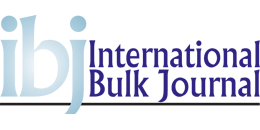


(Posted on 08/01/20)
North Sea Port has posted a record year for the third year in a row. The firms based in the port transhipped 71.4 million tonnes of seaborne cargo, an increase of 1.5%. The growth is mainly due to dry bulk and containers.Moreover, the figure of 71.4 million tonnes means North Sea Port has broken the 70 million tonne barrier for the second time. The rise is primarily down to a growth in exports for the third consecutive year (+9.9%). Two years after its launch as a merged port, North Sea Port is maintaining its position as a true bulk gateway and is also making progress as a hub for containers between maritime and inland waterways.
Almost half of the goods that North Sea Port tranships to and from maritime shipping is dry bulk. That volume rose to 34.6 million tonnes last year (+5.4%). Over two years, this segment is up 10%. A strong construction sector again meant increased transhipment of sand, gravel and construction materials in 2019. Coal transhipment - especially for processing industries - and agricultural products remained steady. Scrap and ores showed a small decline.
The transhipment of conventional break bulk cargo totalled 11 million tonnes (-6.6%). Part of this decrease is attributable to fruit because this is increasingly being transported in containers. However, the transhipment of machines is on an upward trend.
With very strong growth of 48.7%, container transhipment via maritime shipping amounted to a total of 2.5 million tonnes and 330,000 TEU. The transhipment of wet bulk fell slightly to 20.1 million tonnes (-2.2%). This decrease was mainly evident in the (petro)chemical sectors, largely due to a maintenance shutdown. However, a sharp increase (+42%) was recorded in the transhipment of biodiesel and vegetable oil.
The record-breaking was not confined to transhipment via maritime shipping – inland navigation also set a new record, with an increase from 58 million to 60 million tonnes (+3.4%).With transhipment of 71.4 million tonnes via maritime shipping and 60 million tonnes via inland navigation, North Sea Port achieved a total of 131.4 million tonnes transhipped in 2019 (+2.1%). And that isn’t counting a further 15 to 16 million tonnes of transhipment via pipelines.
North Sea Port focuses on both European coastal shipping (short sea shipping) and transatlantic freight traffic. The share of short sea shipping within total freight transhipment via maritime services remained at 63%. As in previous years, goods traffic with Europe and North and South America accounted for more than 90% of total cargo transhipped last year (93.5%).
With a record year behind it and rising freight transhipment in dry bulk and containers, North Sea Port is cautiously optimistic for 2020, as it was in early 2019. A continuation of the current trend of light growth is anticipated. Brexit, shrinking economic growth and (anticipated) trade wars provide reasons for caution.
Peel Ports Group has achieved a 48% reduction in operational greenhouse gas emissions in the last five... Read more
The Trois-Rivières Port Authority (TRPA) in Canada has announced the appointment of Mr. Anick... Read more
Euroports commitment to continuously improving operational efficiency, enhancing workplace safety, and... Read more
Under the slogan ‘Your Intermodal Link Between China, Iberia and the Atlantic Markets,’... Read more
Port of Hamburg Marketing (HHM) continues to strengthen its successful cooperation with Chinese port... Read more
Total throughput in the port of Rotterdam fell slightly by 2.6% in the third quarter of 2025 compared... Read more
E-Crane Asia has announced a major milestone achieved by Bayan in Indonesia: the company’s three... Read more
PD Ports has successfully introduced fully automated weighbridge systems at Teesport and Hartlepool,... Read more
In the first nine months of 2025, Port of Antwerp-Bruges handled 202.6 million tonnes of maritime goods... Read more
The 90th General Assembly of the inland shipping cooperative NPRC has highlighted the importance of... Read more